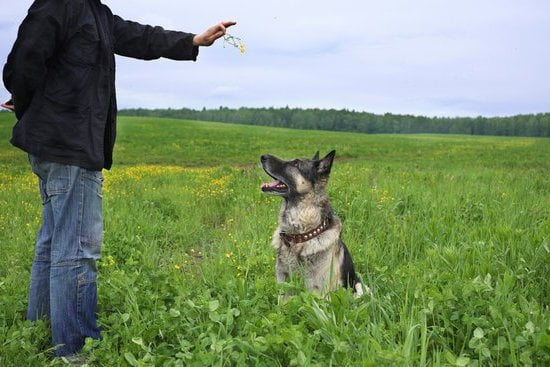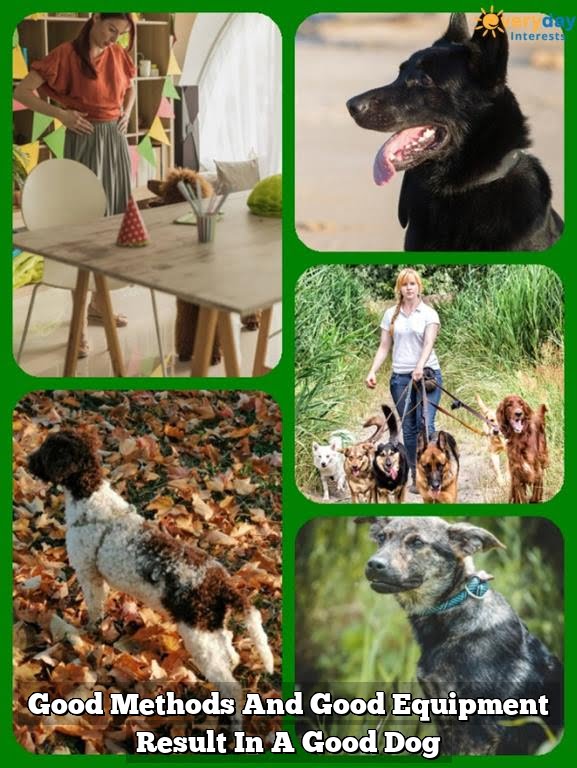In the world of dog training, communication is key. Every word we use, every command we give, and every bit of praise or correction we offer has a powerful impact on our furry companions. The importance of language in dog training cannot be overstated. It sets the tone for our interactions, establishes boundaries, and helps build a strong bond between humans and dogs.
Choosing the right words for effective dog training is crucial. Dogs interpret and understand language differently than humans do, so it’s essential to learn how to communicate with them effectively. When we use clear and consistent commands, our dogs are more likely to understand what we want from them. It’s not just about the words themselves; it’s also about how they are delivered – the tone, pitch, and timing can greatly influence a dog’s response.
Successful dog training relies on establishing a strong foundation of basic commands. Words like “sit,” “stay,” “come,” and “down” are essential for obedience and safety. Consistency is key when teaching these commands – repetition helps dogs understand what is expected of them. By using the right words consistently, we can teach our dogs to respond reliably to our cues.
By understanding the power of language in dog training, we can establish clear communication channels with our furry companions and create harmonious relationships based on trust and understanding. In this article, we will delve into various aspects of using words effectively in dog training – from explaining the science behind how dogs interpret language to exploring advanced techniques that incorporate both verbal cues and hand signals.
So let’s dive in and unlock the secrets of effective communication with our four-legged friends.
The Science Behind Effective Dog Training Words
Communication is a vital aspect of effective dog training. Understanding how dogs interpret and understand language can greatly enhance the training process and strengthen the bond between you and your furry companion.
Decoding Canine Language
Dogs have an amazing ability to pick up on human cues, both verbal and non-verbal. They rely heavily on our tone, pitch, and timing to understand what we are trying to communicate. Research has shown that dogs respond better to high-pitched, enthusiastic tones compared to low-pitched or monotone commands.
Timing is also crucial in dog training. Dogs have a short attention span, so it is important to give commands at the right moment when they are engaged and focused. Reinforcing commands immediately after they have been obeyed helps reinforce the desired behavior in their minds.
The Role of Consistency
Consistency is key when it comes to dog training. Dogs thrive on routine and repetition, so using consistent words and commands helps them understand what is expected of them. It is important to choose words that are easy for your dog to distinguish from regular everyday vocabulary.
Research has shown that dogs respond better to shorter command words that can be easily understood and remembered. For example, “sit,” “stay,” “come,” and “down” are commonly used basic commands that can be taught effectively with consistency and repetition.
Building a Positive Association
Positive reinforcement is a powerful tool in dog training. Using encouraging words while training your dog not only motivates them but also strengthens the bond between you. Dogs respond well to positive reinforcement methods such as treats, praise, or playtime as rewards for performing desired behaviors.
Identifying words or phrases that excite or motivate your dog will help create a positive association with the desired behavior. For instance, if you use the word “good” followed by their name and a treat or praise, your dog will learn to associate that word as a signal for a job well done.
Key Words and Commands for Basic Dog Training
Basic dog training is essential for fostering a well-behaved and obedient canine companion. In this section, we will explore the key words and commands that are crucial for effectively training your dog.
To start off, there are several fundamental commands that every dog should learn. These include “sit,” “stay,” “come,” and “down.” When teaching these commands, it is important to be consistent with the words you use. Dogs thrive on repetition and will better understand what is expected of them if they consistently hear the same command word. For example, if you use “sit” one day and “park it” the next, your dog may become confused or not respond as desired.
In addition to consistency, timing is also a critical factor in effective dog training. Dogs have a short attention span, so it is important to deliver the command word at the exact moment you want them to perform the behavior. This helps reinforce the association between the word and action in their minds.
To further enhance your training sessions, incorporating positive reinforcement can be incredibly powerful. Using encouraging words or phrases such as “good boy/girl” or “well done” when your dog successfully performs a command can motivate them to continue behaving appropriately. It is important to remember that positive reinforcement encourages desired behaviors rather than punishing unwanted ones.
Overall, mastering basic commands through key words and consistent practice lays the foundation for more advanced training techniques. By choosing appropriate words and commands for basic dog training, you can effectively communicate your expectations to your furry friend and build a strong bond based on trust and understanding.
Positive Reinforcement
In dog training, positive reinforcement is a powerful tool that motivates and encourages dogs to perform desired behaviors. Using encouraging words can have a significant impact on the effectiveness of training sessions and the overall bond between a dog and their owner. By reinforcing good behavior with positive language, dogs learn to associate certain actions with praise and rewards, making them more likely to repeat those actions in the future.
One key aspect of using encouraging words in dog training is choosing the right rewards. While treats can be effective, verbal praise can also play a crucial role in reinforcing positive behaviors. Dogs are social animals that thrive on attention and approval from their owners, so hearing kind and enthusiastic words can be extremely motivating. You can use phrases like “good job,” “well done,” or “great job” when your dog successfully follows a command or exhibits good behavior.
Consistency is another important factor when using encouraging words for training purposes. Dogs learn through repetition and consistency, so it’s essential to consistently use positive language during training sessions. This helps reinforce the idea that certain behaviors are desirable and worthy of acknowledgement. It’s also important to deliver praise immediately after the desired behavior occurs to ensure clear communication between you and your dog.
| Encouraging Words | Description |
|---|---|
| “Good job.” | A phrase that highlights successful execution of a command or good behavior. |
| “Well done.” | An expression of praise used when a dog performs exceptionally well during training. |
| “Great job.” | A phrase that communicates strong approval of a dog’s behavior or response to a command. |
Using encouraging words and positive reinforcement can make the training process more enjoyable for both you and your furry companion. Remember to be consistent and timely with your praise, and choose rewards that your dog finds motivating. By incorporating encouraging words into your training routine, you’ll build a stronger bond with your dog and enhance their learning experience.
Avoiding Confusion
When it comes to dog training, it is crucial to choose words and phrases that are clear and easily understandable for your furry friend. In this section, we will discuss the importance of avoiding certain words in your training vocabulary that can potentially confuse or frustrate your dog.
One word to eliminate from your training vocabulary is “no.” While it may seem like a straightforward command, dogs often have difficulty associating it with a specific behavior. Instead of simply saying “no,” it is more effective to use positive commands that clearly communicate what you want your dog to do. For example, if your dog jumps up on guests, teach them the command “off” to signify that they should keep all four paws on the ground.
Another word to avoid is “bad.” Using negative labels can have a detrimental effect on your dog’s confidence and obedience. Instead, focus on positively reinforcing good behaviors with encouraging words like “good job” or “well done.” By using positive reinforcement, you are rewarding and motivating your dog to continue performing desirable actions.
Additionally, it is important to be consistent with your commands and avoid using similar words for different behaviors. Dogs rely heavily on consistency and repetition in their training. Using different words or phrases for the same command can confuse them and make it harder for them to understand what you want from them. Stick to using one clear word or phrase for each behavior you are teaching.
In summary, choosing the right words for dog training involves avoiding confusion by eliminating certain words from your vocabulary. Replace unclear commands like “no” with positive alternatives like “off” or “leave it.” Use encouraging words instead of negative labels to reinforce good behaviors. And most importantly, be consistent in the language you use so that your furry companion knows exactly what is expected of them. By doing so, you can enhance communication with your dog and improve their training progress.
Advanced Techniques
In the world of dog training, there is a progression from basic commands to more complex tasks. Once your furry companion has mastered the foundational commands like “sit,” “stay,” and “come,” it’s time to move on to advanced techniques that incorporate verbal cues. These cues can enhance communication with your dog and expand their repertoire of skills.
Introducing Advanced Commands
One of the essential aspects of advanced training is introducing new commands such as “fetch,” “heel,” and “leave it.” These commands not only challenge your dog mentally but also provide them with opportunities for physical exercise and mental stimulation. When teaching these advanced commands, it is crucial to break them down into small steps.
For example, when teaching your dog to fetch, you can start by introducing the concept of holding objects in their mouth using a specific word like “hold” or “take.” Gradually progress by tossing a toy a short distance and using the command for fetching it back. Reward your dog each time they successfully complete each step of the command until they have mastered retrieving objects on command.
The Role of Hand Signals
In addition to verbal cues, incorporating hand signals alongside them can significantly enhance your dog’s ability to understand and respond to commands. Dogs are highly attuned to visual cues, making hand signals an effective means of communication. For example, you can use an open palm facing downward as a signal for “down” or pointing at an object as a signal for “fetch”.
When introducing hand signals, make sure they are clear and distinct from one another. Consistent pairing of verbal cues with hand signals will help reinforce the association between the two forms of communication in your dog’s mind.
Tailoring Techniques to Your Dog’s Individuality
As with any form of training, it is important to consider your dog’s individual personality and breed traits when incorporating advanced techniques. Some breeds may respond better to certain commands, while others may find them challenging. Pay attention to your dog’s strengths and limitations, and adjust your training approach accordingly.
For example, working breeds like Border Collies or German Shepherds thrive on mental stimulation, making complex tasks like “heel” or “learn names of objects” particularly engaging for them. On the other hand, more independent breeds like Shiba Inus may require extra patience and repetition when learning advanced commands.
Incorporating verbal cues for complex training allows you to continue strengthening your bond with your furry companion while expanding their skills and capabilities. By breaking down commands, using hand signals alongside verbal cues, and tailoring techniques to your dog’s individuality, you can effectively communicate and teach more advanced behaviors. Remember to be patient and consistent in your training approach as you guide your intelligent canine friend towards mastering new challenges.
Tailoring Words to Specific Breeds and Personalities
One important aspect of dog training that is often overlooked is tailoring the words and commands to specific breeds and personalities. Just like humans, different dogs have their own unique traits and characteristics that should be taken into consideration when choosing the right words for training. By understanding these breed-specific traits and individual personalities, dog owners can better communicate with their furry companions and achieve more effective training results.
Each breed has its own distinct temperament and behavioral tendencies. For example, some breeds are known for being highly intelligent and eager to please, while others may be more independent or easily distracted. It is important to consider these traits when selecting the words and commands for training.
For intelligent breeds such as Border Collies or German Shepherds, using clear and concise commands that engage their mental capabilities can be highly effective. On the other hand, breeds that are more independent may require a different approach, such as incorporating rewards or incorporating play into the training process.
In addition to breed-specific traits, it is also crucial to consider the individual personality of each dog. Just like people, dogs have their own likes/dislikes, fears, and motivations. Some dogs may respond well to a firm tone of voice and assertive commands, while others may shut down or become fearful in response to harshness. It is important for dog owners to observe their pets closely and adapt their training vocabulary accordingly.
For instance, a sensitive or shy dog may benefit from gentle encouragement and soft tones during training exercises. Offering praise and rewards for small achievements can also help build confidence in these types of dogs. Conversely, a more outgoing and confident dog might respond better to enthusiastic praise or using high-energy words like “good boy” or “well done”.
By taking into account both breed-specific traits and individual personalities, dog owners can tailor their training vocabulary to effectively communicate with their furry friends. This personalized approach not only enhances understanding but also fosters a stronger bond between humans and dogs.
Table: Tailoring Words to Specific Breeds and Personalities
| Breed/Personality Traits | Training Approach |
|---|---|
| Energetic and intelligent (e.g., Border Collies) | Clear and concise commands, mental stimulation, incorporating play |
| Independent or easily distracted (e.g., Siberian Huskies) | Incorporating rewards, varying training techniques, patience |
| Sensitive or shy | Gentle encouragement, soft tones, praise for small achievements |
| Confident and outgoing | High-energy words of praise, enthusiastic reinforcement |
Troubleshooting
While training your dog, you may encounter various challenges along the way. Dogs, like humans, have different learning styles and personalities that can make teaching certain commands more difficult. In this section, we will explore some common challenges that dog owners may face when teaching commands to their furry companions and provide strategies for addressing these challenges.
One common challenge is inconsistency in command delivery. Dogs thrive on consistency and repetition, so it’s important to use the same word or phrase consistently for each command.
If you find that your dog is not responding to a particular command, it may be because you have inadvertently used different words or gestures. To address this challenge, make sure to choose one specific word or gesture for each command and consistently use it every time you give the corresponding instruction.
Another challenge is distractions during training sessions. Dogs are easily distracted by their environment, especially when they are outdoors or in a new location. If your dog is struggling to focus during training sessions, try finding a quiet and familiar space where there are minimal distractions. Gradually introduce more distractions as your dog becomes more proficient at following commands.
Some dogs may also exhibit fear or anxiety during training sessions, which can hinder their ability to learn and respond to commands. If your dog shows signs of fear or anxiety, such as trembling or hiding, take a step back and create a safe and positive learning environment for them. Use positive reinforcement techniques and reward them with treats or praise when they successfully follow a command. Gradually increase the difficulty of the commands as your dog becomes more comfortable.
Conclusion
In conclusion, the power of language in dog training should not be underestimated. Choosing the right words and commands can have a significant impact on the effectiveness of training and the bond between you and your furry companion. Through understanding how dogs interpret language, utilizing positive reinforcement, and tailoring words to specific breeds and personalities, you can enhance your communication and achieve optimal results in training.
One important aspect to consider is the science behind effective dog training words. Dogs have their own way of understanding language, relying heavily on tone, pitch, and timing. By being aware of these factors and utilizing them strategically in your commands, you can effectively communicate with your dog and reinforce desired behaviors.
Additionally, incorporating positive reinforcement through encouraging words plays a crucial role in successful training. Motivating and rewarding desired behaviors with praise or treats has proven to be more effective than using punishment or negative commands. Identifying specific words or phrases that motivate your dog can create a positive association with training sessions and strengthen the bond between you.
Furthermore, it is essential to avoid confusion by eliminating certain words or phrases from your training vocabulary that could potentially frustrate or confuse your dog. Understanding common mistakes in using negative commands and their repercussions can help you choose alternative approaches that are more conducive to learning.
Ultimately, by implementing the techniques discussed throughout this article and tailoring them to your specific dog’s breed traits and personality, you can enhance communication with your furry companion and achieve successful training outcomes. Remember to be patient, consistent, and always prioritize positive reinforcement over punishment. Building a strong bond with your dog through effective communication will not only result in a well-trained pet but also a happier lifelong relationship between you both.
Frequently Asked Questions
What words to use when training your dog?
When training your dog, it is important to use clear and concise words that are easily distinguishable for them. Opt for words that are one or two syllables long, as they tend to be more effective in capturing your dog’s attention. Avoid using common everyday words that may confuse your pet or cause them to become desensitized to the command.
Instead, choose specific words for each command, such as “sit,” “stay,” “down,” “come,” and “fetch.” These words should be consistently used during training sessions, making it easier for your dog to understand what you want from them.
What are good recall words for dogs?
Good recall words for dogs should be unique yet easy to remember and pronounce. The goal of a recall word is to immediately grab your dog’s attention and signal them to return to you promptly. It is recommended to use a recall word that is not commonly used in day-to-day conversations with your pup, so it stands out among other sounds.
Words like “here,” “come,” or even a custom made-up word can work well for recall commands. Consistency in using the chosen word during training sessions will help establish its meaning and ensure an immediate response when calling your dog back.
What are the 7 most important dog commands?
While there are many useful commands you can teach your dog, the seven most important ones are: sit, stay, down, come (recall), leave it, off (or drop it), and heel (walking politely on a leash). These commands provide a strong foundation for obedience and safety while also giving you better control over your furry friend’s behavior.
Teaching sit helps control impulsive actions and sets boundaries; stay ensures your dog remains in place until given permission to move; down teaches them to lie calmly on command; come establishes reliable recall skills; leave it instructs them not to touch something potentially harmful; off/drop it encourages releasing objects politely; finally, heel allows for enjoyable and controlled walks without pulling. Mastering these commands ensures a well-behaved and responsive companion, enhancing the bond between you and your dog.

Welcome to the blog! I am a professional dog trainer and have been working with dogs for many years. In this blog, I will be discussing various topics related to dog training, including tips, tricks, and advice. I hope you find this information helpful and informative. Thanks for reading!





